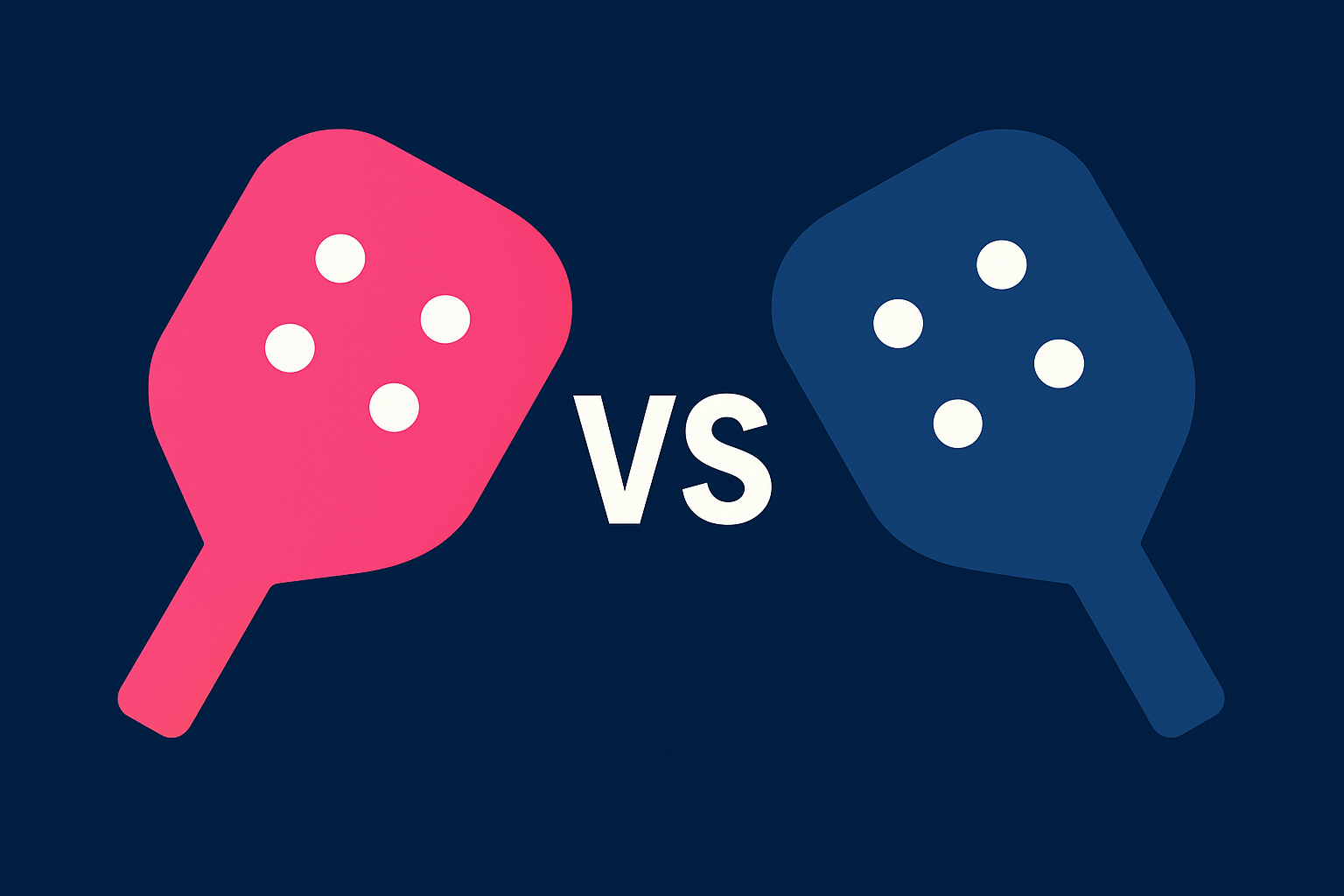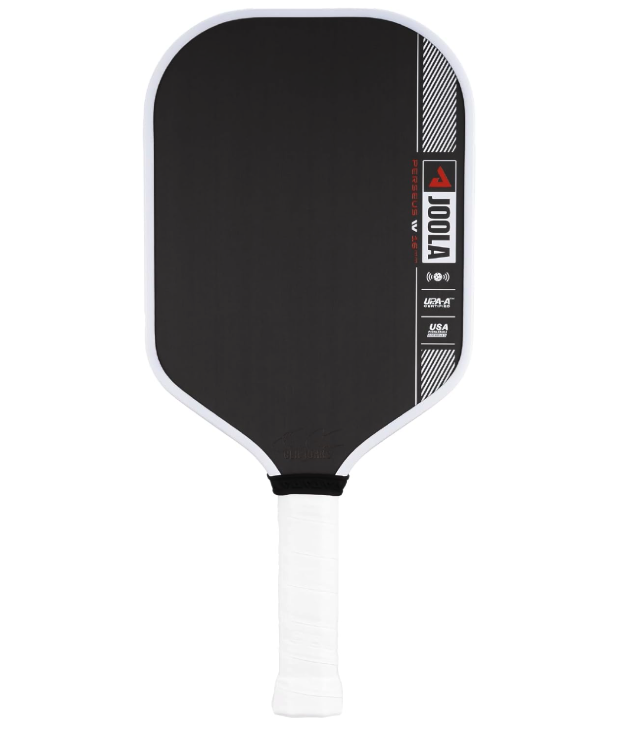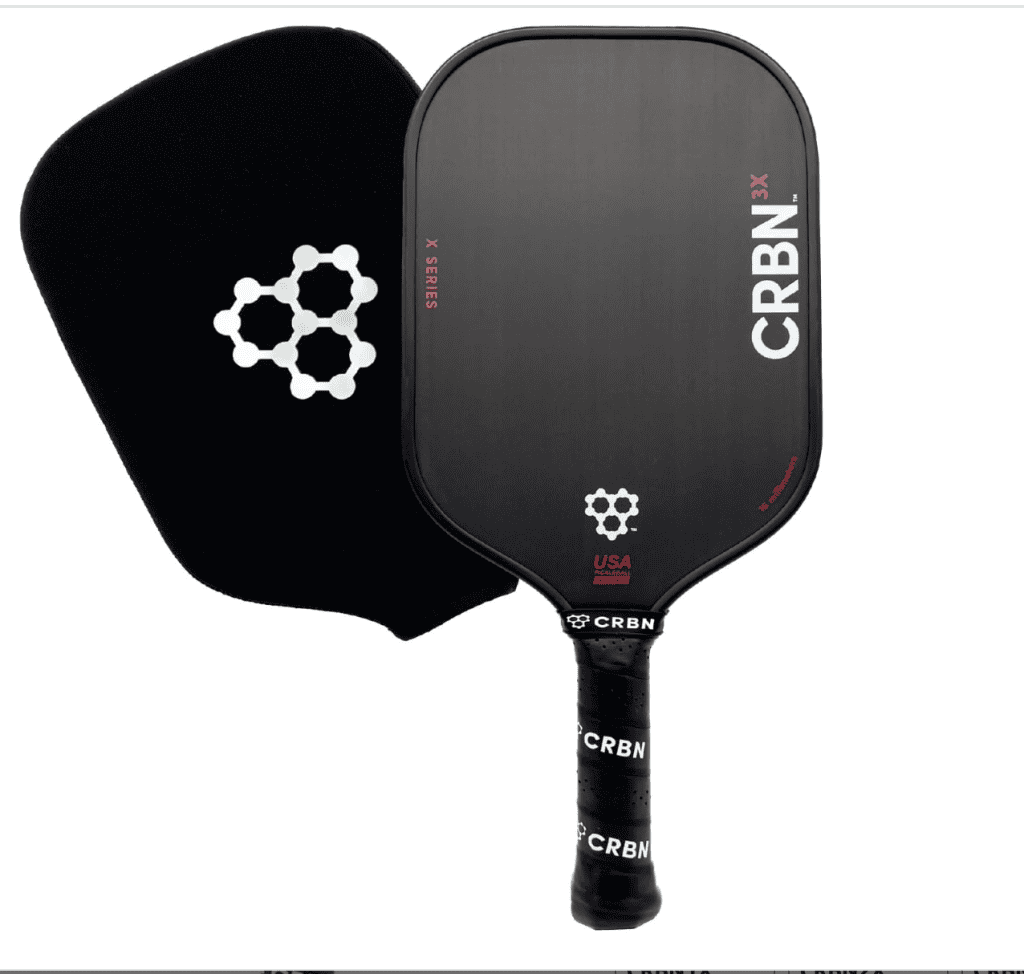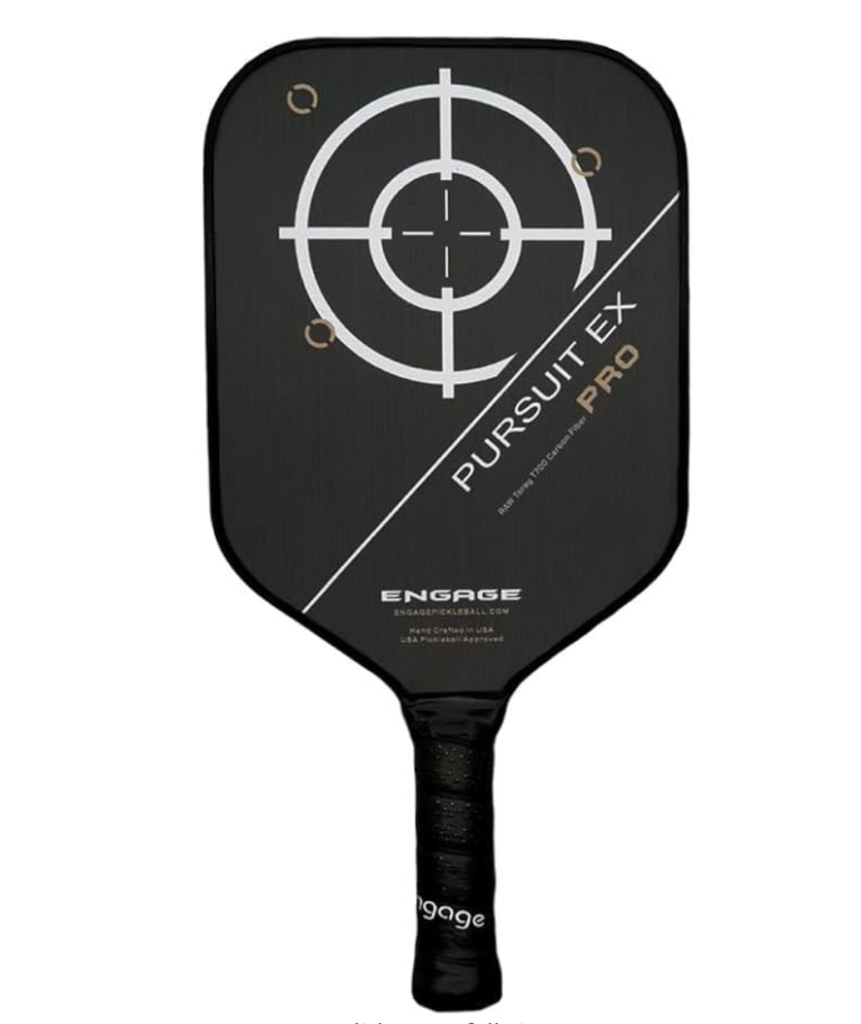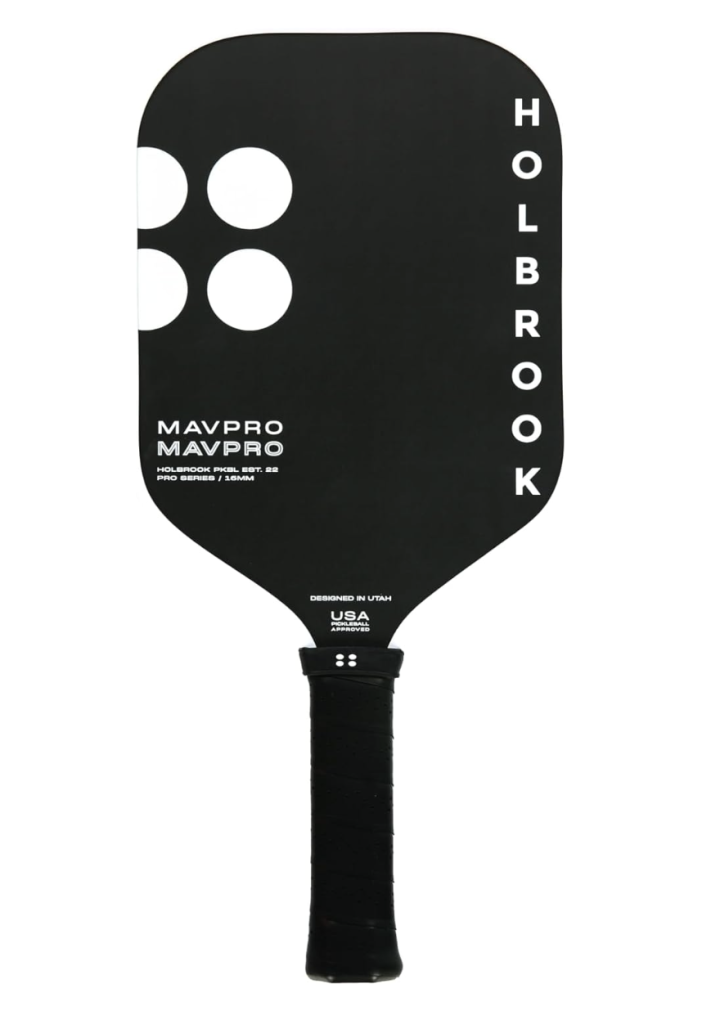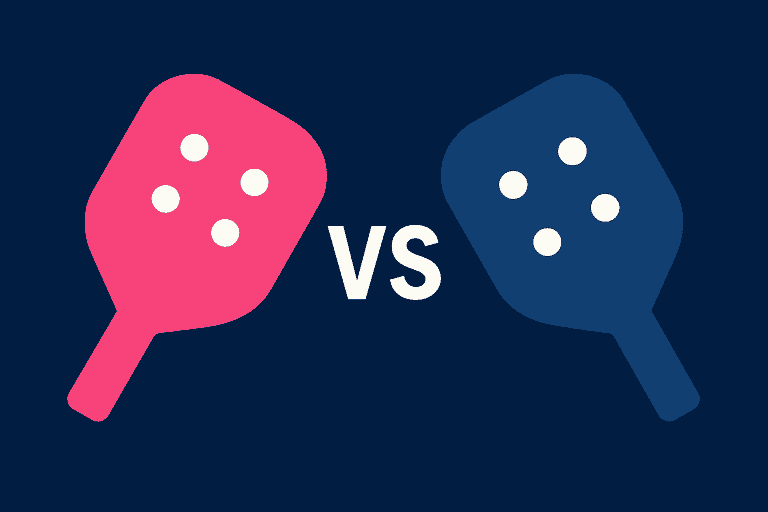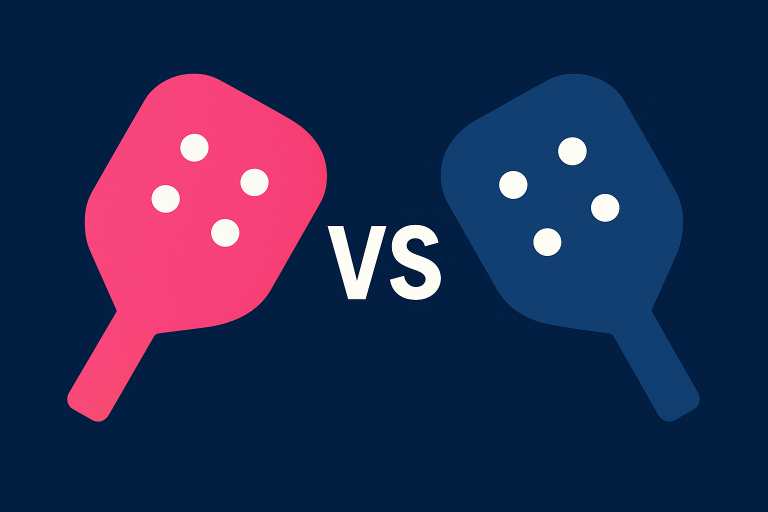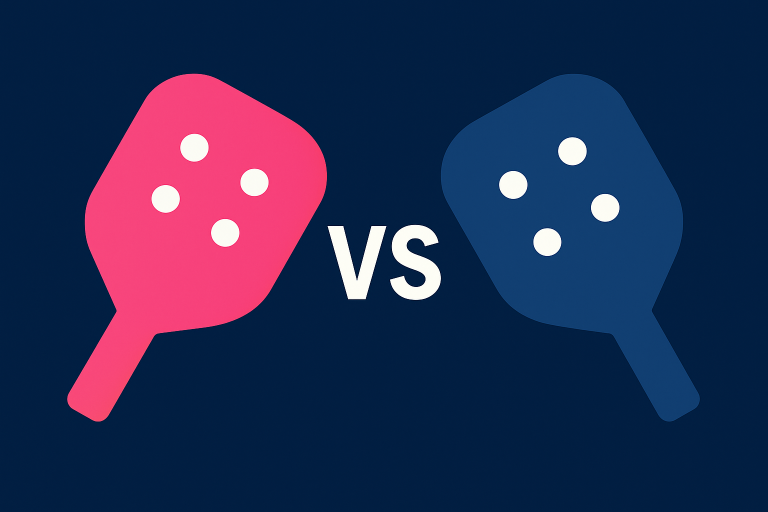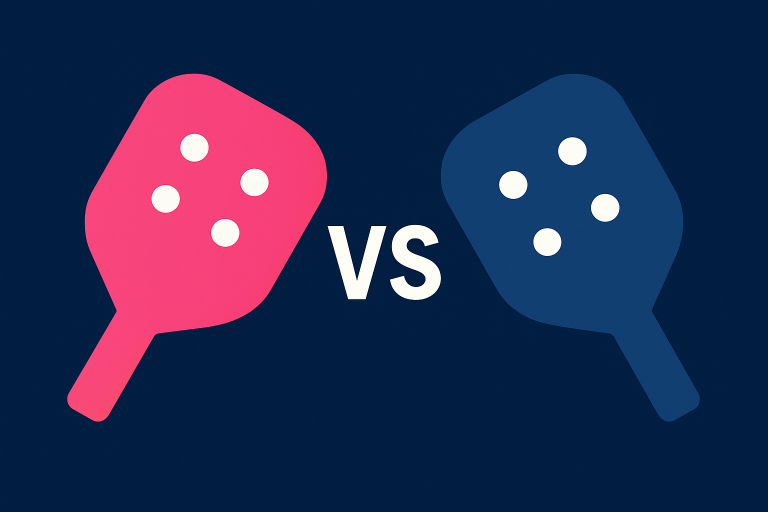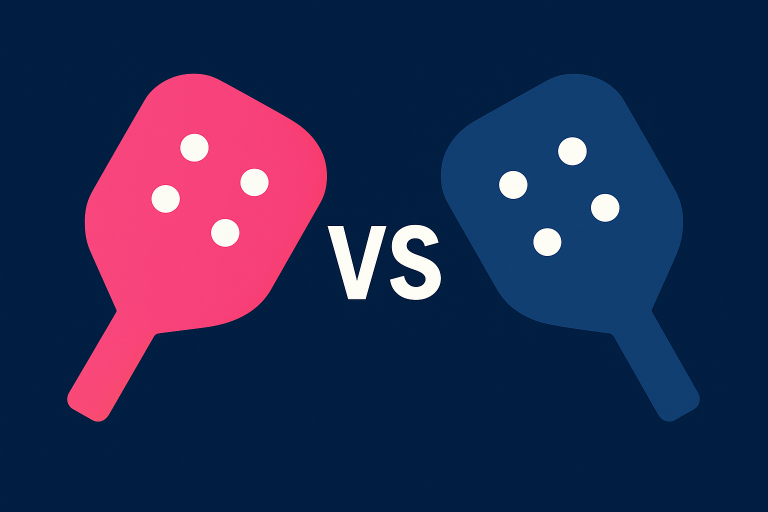16mm vs 14mm Pickleball Paddle — Which Thickness Wins in 2025?
Updated September 2025
A few years ago, nobody at open play was talking about paddle thickness. It was all about graphite vs fiberglass, carbon vs composite. Now? Players are comparing cores like they are comparing cars. “Do you play a 16?” “No, I’m a 14 guy.” It sounds nerdy, but the difference is real.
The debate really boils down to this: do you want plush control or all around balance? A 16mm paddle gives you stability, comfort, and forgiveness, while a 14mm gives you a little more pop and quicker hands without being as twitchy as a 13mm.
Let’s break down the differences in plain English so you know which camp you belong in.
What 14mm Paddles Actually Feel Like
A 14mm paddle is the middle child. It doesn’t explode off the face like a 13mm, and it doesn’t sit soft like a 16mm. Instead, it does a little of both. That’s why so many brands now release their flagship models in 14mm, it’s the broadest sweet spot for most players.
You’ll notice:
- A faster swing and more hand speed in firefights.
- Enough stability for drops and resets, without going too muted.
- A balance that suits both singles and doubles.
If you’re not sure where to land, 14mm is often the safest experiment.
What 16mm Paddles Actually Feel Like
The first thing you notice with a 16mm paddle is the calm. The ball feels like it sinks in longer, and the paddle face doesn’t twist as much on off-center hits. Your soft game sharpens up. Resets drop shorter, blocks feel stable, and you stop sailing every dink wide.
What you trade away is easy power. If you are someone who lives on big serves, drives, or counters, you will have to bring more of that juice yourself.
You’ll notice:
- Quieter, more cushioned contact.
- Stability in hand battles and defensive scrambles.
- Extra comfort for longer play sessions, especially if you’ve got elbow or wrist issues.
16mm vs 14mm Pickleball Paddle: Key Differences
Here is how it shakes out in real games:
- Control: 16mm wins. Bigger sweet spot, softer feel, safer drops.
- Power: 14mm has more pop. Not wild, just enough to make drives and serves easier.
- Spin: Depends on face material, but 14mm often feels quicker through the ball.
- Durability: Neither lasts forever, but thicker paddles sometimes age a touch better since they absorb shock more evenly.
- Comfort: 16mm is easier on the arm, especially for players with tennis elbow or nagging wrist pain.
Versatility: 14mm adapts better to singles, doubles, and mixed formats.
Best 14mm Pickleball Paddles to Try in 2025
JOOLA Ben Johns Perseus 14mm
Why It’s Here: JOOLA’s Perseus 14mm has become the benchmark for spin and balance. It feels fast in hand, grabs the ball, and still gives you enough forgiveness to hang at the kitchen.
Ideal For: Aggressive intermediates and singles players who want quick offense without giving up touch.
Key Specs:
- Thickness: 14mm
- Weight: 7.8–8.0 oz
- Face: Raw carbon
- Handle: 5.25”
CRBN-2X Power Series 14mm
Why It’s Here: A thermoformed spin monster, the CRBN-2X 14mm is lighter and quicker than its 16mm sibling. You still get stability, but the extra pop makes it a singles favorite.
Ideal For: Players who want to pressure with drives and spin but still need some forgiveness.
Key Specs:
- Thickness: 14mm
- Weight: 7.8–8.1 oz
- Face: Raw carbon
- Handle: 5.5”
Best 16mm Pickleball Paddles to Try in 2025
Engage Pursuit Pro EX 6.0 (16mm)
Why It’s Here: Engage doesn’t chase hype and marketing gimmicks, it just builds reliable paddles. The Pursuit Pro EX 6.0 is a control machine, with a soft face and plush core that doubles players swear by.
Ideal For: Kitchen tacticians, defenders, and players who want their paddle to do the calming for them.
Key Specs:
- Thickness: 16mm
- Weight: 7.9–8.3 oz
- Face: Raw carbon
- Handle: 5.25”
Holbrook Mav Pro 2.0 16mm
Why It’s Here: A sleeper pick, the Holbrook Mav Pro 2.0 plays steadier than its price tag suggests. You get a big sweet spot, a soft but not mushy feel, and reliable control for long rallies.
Ideal For: Intermediates who play mostly doubles and want a stable paddle without overspending.
Key Specs:
- Thickness: 16mm
- Weight: ~7.9 oz
- Face: Raw carbon
- Handle: 5.25”
Situations Where 14mm Wins
- Singles tournaments: The pace you get from 14mm helps with serves, returns, and passing shots.
- Fast hands battles: A quicker swing weight can decide who survives a kitchen flurry.
- Players upgrading from 13mm: If you want a touch more forgiveness without losing all your pop, 14mm is the right stepping stone.
Situations Where 16mm Wins
- League doubles: Longer rallies and resets are easier to control with extra thickness.
- Older players: If comfort and vibration reduction matter more than raw pace, thicker cores save your joints.
- Defensive grinders: If you want to frustrate bangers and control tempo, 16mm is your friend.
Care and Longevity Tips
Whether you choose 14mm or 16mm, your paddle still needs care:
- Protect it. Grab a cover like the Selkirk Premium Paddle Cover to shield it from scrapes and sun.
- Clean it. A simple wipe with MagicFiber Microfiber Cloths keeps grit from embedding in the face.
- Refresh grips. If you’re sweating through stock grips, swap to Gamma Supreme Overgrips for a tacky hold.
- Avoid heat. Leaving your paddle in the trunk is one of the quickest ways to ruin any core.
Wrapping It Up
The 16mm vs 14mm pickleball paddle debate isn’t about which one is “better.” It’s about which one suits how you like to play. If you thrive on offense, pace, and singles rallies, 14mm feels sharper and faster. If you love doubles strategy, resets, and longer exchanges, 16mm gives you the calm you need.
Either way, the best way to decide is to test both. Borrow from a friend, demo from a retailer, or rotate between cores for different formats. Once you feel the difference in your own hand, the choice usually makes itself.
FAQ: 16 vs 14mm Pickleball Paddle
Which is better, 14mm or 16mm?
It depends. 14mm offers balance and speed, while 16mm leans into control and stability.
Do pros use 14mm or 16mm paddles?
Both. Many singles pros lean 14mm for offense, while doubles pros often prefer the calm of 16mm.
Does 16mm reduce vibration?
Yes, the extra core thickness absorbs more shock, making it easier on the arm.
Is 14mm good for beginners?
Yes, it gives you balance without being too muted. But some beginners like 16mm for forgiveness.
Do 16mm paddles last longer?
Not always. Longevity depends more on brand and construction than thickness.
Can I use one paddle for both singles and doubles?
Of course. Many players find 14mm the most versatile crossover choice.

